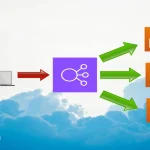Introduction
Serverless computing has changed how modern applications are built. Among the available solutions, AWS Lambda stands out. It allows you to run code without provisioning or managing servers. This service offers scalability, flexibility, and cost savings. In this article, we’ll explore AWS Lambda, its benefits, common use cases, and best practices.
Table Of Content
What is AWS Lambda?
AWS Lambda is a serverless compute service from Amazon Web Services. It runs your code in response to events and automatically manages the infrastructure. Developers can use languages like Node.js, Python, Java, Go, and Ruby. With Lambda, you no longer worry about servers, scaling, or maintenance.
Key Features of AWS Lambda
- Event-driven execution – Functions are triggered by events such as HTTP requests, S3 uploads, or DynamoDB updates.
- Pay-per-use pricing – You only pay for the compute time your function consumes. No upfront fees.
- Automatic scaling – Lambda scales seamlessly to match incoming traffic.
- AWS integration – Works with many AWS services, letting you build complete serverless applications.
- Multiple runtimes – Supports various programming languages, so you can pick what suits your needs.
Common Use Cases
- Web applications – Build serverless backends that process HTTP requests and interact with databases.
- Data processing – Analyze S3 or Kinesis data in near real time using triggers.
- File handling – Process files on S3 upload by validating or transforming them.
- IoT applications – Handle data streams from IoT devices and trigger actions.
- Automation – Automate tasks and orchestrate workflows across AWS services.
Benefits of AWS Lambda
- Less operational overhead – Focus on writing code, not managing servers.
- Faster development – Deploy quickly and bring features to market sooner.
- Cost efficiency – Pay only for the execution time used.
- Scalability and availability – Handles sudden spikes automatically.
- Deep AWS integration – Works seamlessly with other AWS services.
Best Practices for AWS Lambda
- Optimize function performance – Reduce execution time and unnecessary dependencies.
- Design for scale – Keep functions stateless so they scale horizontally.
- Use logging and tracing – Leverage CloudWatch Logs and AWS X-Ray.
- Secure execution – Apply least-privilege IAM roles and encrypt sensitive data.
- Monitor and tune – Track key metrics and adjust memory or timeout values as needed.
Conclusion
AWS Lambda has transformed cloud computing. It provides a reliable, scalable, and cost-effective way to build modern applications. By adopting Lambda, teams can move faster, reduce infrastructure overhead, and deliver better experiences to users. Whether for web apps, automation, or IoT, Lambda remains one of the most versatile services in AWS.







